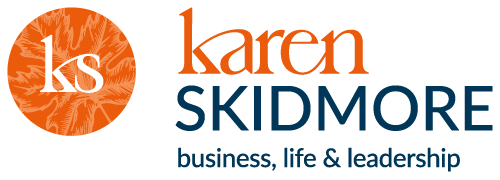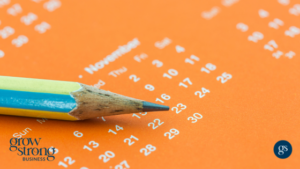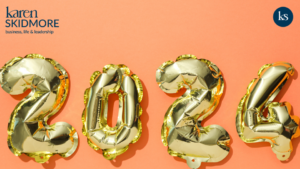Our work culture is not working for us anymore!
For the past thirty years, our obsession with doing more in less time has exponentially increased. The access to the first home computers and the World Wide Web has opened us to an endless stream of technology to make us more efficient. Today, our smartphones can tell us how well we are eating, sleeping and running, and we have access to an endless supply of productivity apps to help us do more in less time.
Our work boundaries are so blurred that most of us now feel panicked if you ever leave the house without your smartphones, and it’s been reported that 71% of people sleep either holding their smartphone, having it in bed with them, or having it on their nightstand. It’s the first thing they look at when they wake and the last thing they see before they close their eyes at night.
But with all this technology to allow us to do more in less time, how productive are we really?
In the UK, Britons are working an average of 42.5 hours a week, and my guess is that you are probably exceeding this if you include the time spent on your phone, checking emails and hours thinking about work when you are not sitting at your desk.
It’s not just the physical hours spent working; it’s also the mental load of not switching off when you close down your laptop.
Not surprisingly, it turns out we are simply not designed to be working this hard. We have been taught to work in a linear way throughout the year, not taking into account our seasons, changing daylight hours or our own body’s natural rhythms and hormone cycles.
Work and life is designed in 24 hour cycles.
And yet 50% of the population don’t work this way!
Binary female hormones typically work around a 28 day cycle (our menstruation cycle), whereas binary male hormones typically work around a 24 hour cycle. It’s not that women can’t work to a 24 hour clock, but our linear work culture has programmed us to be productive day in, day out, often striving to do more, in less time, and not taking into account our own body’s natural rhythms and hormone cycles.
Plus 2020 has seen unprecedented changes to the way that we all work. Even for those of you who already worked from home, you’ve been dealing with the challenges of isolation, endless Zoom calls, children home from school and partners working from home with you.
A recent study from LeanIn.org found that women who have full-time jobs have taken on way more housework and caregiving than men during the pandemic; estimated at an extra 20 hours a week, compared to men, on top of their 40+ hour working week.
And that’s not all. If midlife women don’t already have enough to contend with, the menopause can hit you like a freight train! If you are already experiencing levels of stress, peri-menopausal symptoms such as brain fog, fatigue, raging headaches, aching bones and hot sweats, can slow us down and be incredibly frustrating and exhausting.
How I learnt to change my hard work story
Back in 2012, I hit burnout hard. Still reeling from losing my dad to cancer two years previously, I found myself unable to function and couldn’t get out of bed one weekend. I can look back now and see all the signs; the extreme fatigue, brain fog, body in pain. But because I had programmed myself to keep working hard at trying to get everything to work – life, business, family – I ignored the signs and just kept working harder to keep all the balls in the air.
I was sandwiched between life and business, squashing myself harder as I tried to keep up with it all.
That summer was the start of five years of horrid hormonal imbalance and peri-menopausal symptoms which I realised couldn’t be fixed with a pill or a two week holiday. I had to reset, reboot and take some serious rest, and yet I felt really guilty about taking my foot off the pedal.
I had images of just laying on the sofa and watching daytime TV all day, whenever I was challenged that I may need to rest and do less in my day-to-day life. I just couldn’t do that! I had things to achieve and resting wasn’t something I had been taught how to do.
But I came to realise that doing less isn’t about doing nothing. It’s about doing less of the busy stuff, and doing more of what matters to us and the values we want to live by. And doing it in a way that flows with our natural cycles and energy ebb and flows.
One of the areas that needed to change was the way I was working, and I started on a journey of exploring and understanding what working less hard actually meant. Today, I bring everything that I have learnt condensed into my Ebb & Flow programme, a new approach to managing work, time and energy.
It’s time to stop trying to work to our modern, fast-paced schedules and work productivity expectations (often designed for how factories and assembly lines work, rather than human beings), and experience how to get out of your head, slow down your race to success and embrace your natural work flow and leadership style.
And it all starts with this simple, easy to follow 28 Day Energy Tracker.
How to use this 28 Day Energy Tracker
Step One: Download a copy right here
Step Two: Print the 28 Day Ebb & Flow Energy Tracker (page 8 in the PDF)
This process is best done analogue because you will be doing this first thing in the morning and last thing at night. You don’t need to open your phone or look at a screen to follow this process.
Step Three: Your Morning Tracking
There are five things to track first thing in the morning:
- Where you are in your menstrual cycle
- What phase the moon is in
- What the weather is outside
- What time the sun rose
- What was the quality of your sleep
What you are collecting is objective data; data that can be measured consistently and is not influenced by emotion or opinion. When you download the energy tracker, you will be able to read more about how these five things are relevant and how they can affect their energy levels.
Step Four: Your Evening Tracking
At the end of each day, you will decide how in flow you felt and give your energy flow a score out of ten.
This data is subjective, and these scores will be influenced by your levels of stress, tiredness and what you’ve actually done each day. In the energy tracker download, I will help you define your flow to make it easy for you to track consistently.
Step Five: What do you notice?
At the end of the 28 days, notice what patterns occur.
- Did you experience a higher level of energy flow at different times of your menstrual cycle?
- How did the weather or the season affect your energy flow?
- Perhaps you discover your work patterns change with the different phases of the moon, and different kinds of tasks are more easily achieved on different days?
You have a small section to make your own notes on what you notice, but I would encourage you to get yourself a journal to use alongside this tracker to help you expand your thoughts over the coming weeks and months, especially as energy tracking becomes part of your every day routine.
28 days will give you a really great starting point in which to spot your natural cycles, but the more data you collect over more months, the more you will see patterns appear over a longer period of time, especially if you are transitioning through the menopause or recovering from a long term illness.
When I first started experimenting with energy tracking, the biggest benefit I felt was the realisation that I had good days in between the not-so-good days, which really helped me appreciate the days I felt better, and how much in flow I was in and how much I did achieve on those days. It made me realised that I wasn’t failing all the darn time; the not-so-good days stopped playing such a dominant role in who I was defining myself as!
Over the years of doing this kind of energy tracking, I have narrowed down the key things to notice and simplified the process to create this energy tracker that you have access to today. It has since become the bedrock for helping me begin to predict how my energy ebb and flows really worked, and how I could ensure I could achieve what I wanted to do, whilst thriving in the process. And I would love for you to experience this, too.
Let me know how you get on with this simple and easy to use energy tracker. And for those of you who want to continue in the journey, look out for details of our Ebb & Flow programme starting early 2022.
Thank you for reading. Until next time, do less, be more, play bigger.







